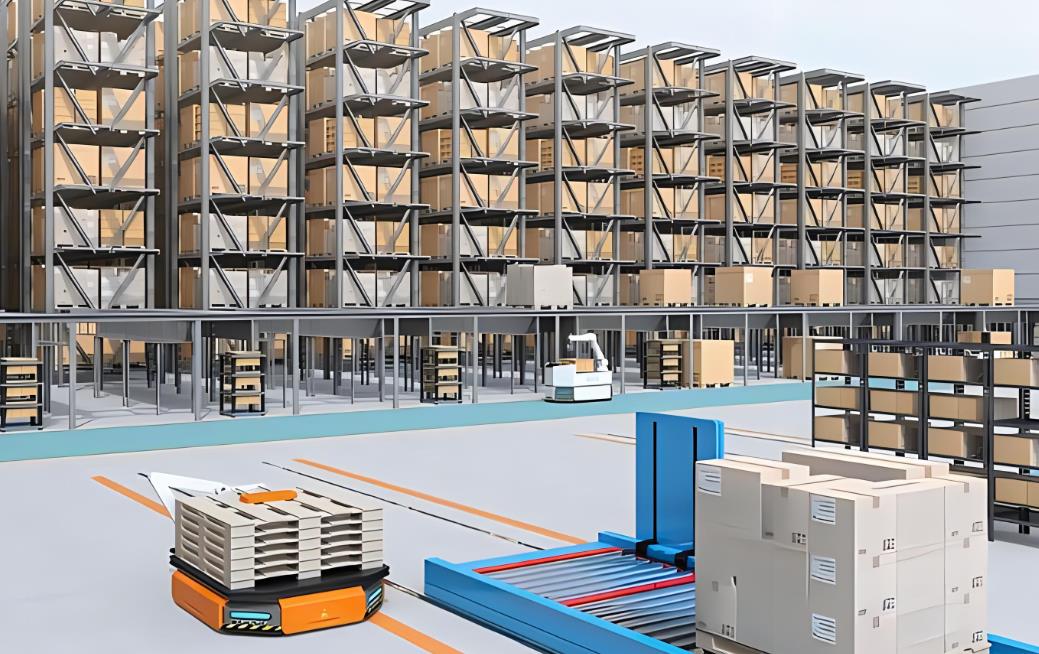Some issues to consider before building an automated warehouse
Before building an automated warehouse, several important issues should be considered to ensure a successful implementation. Here are some key considerations:
1. Cost Analysis: Evaluate the costs associated with building and implementing an automated warehouse. This includes not only the initial construction costs but also expenses related to equipment, software, maintenance, and training. Compare these costs to the potential benefits and return on investment (ROI) to determine the financial feasibility of automation.
2. Operational Efficiency: Analyze your current warehouse operations and identify areas where automation can bring significant improvements. Consider factors such as order volume, inventory management, picking and packing processes, and throughput requirements. Automation should enhance efficiency, reduce errors, and increase productivity in your specific operational context.
3. System Design and Integration: Develop a comprehensive system design plan that encompasses all aspects of automation, including equipment layout, material flow, software integration, and connectivity. Ensure that the automation system is compatible with existing infrastructure, such as warehouse management systems (WMS), enterprise resource planning (ERP) software, and other internal systems.
4. Scalability and Flexibility: Plan for future growth and changing business needs. Consider whether the automated warehouse can accommodate increased order volumes, changes in product mix, or modifications to operational processes. Scalability and flexibility are crucial to ensure that the automation system can adapt to evolving business requirements.
5. Technology Selection: Evaluate different automation technologies available in the market, such as automated storage and retrieval systems (AS/RS), conveyor systems, robotic picking systems, and sorting systems. Assess their compatibility with your specific needs, budget, and space constraints. Engage with automation vendors or consultants to understand the capabilities and limitations of different technologies.
6. Workforce Considerations: Assess the impact of automation on your workforce. Determine whether the implementation of automation will require retraining or reallocation of existing employees. Additionally, consider if new skill sets will be needed to operate and maintain the automated systems. Establish a clear communication plan to address any concerns or resistance from employees during the transition.

7. Safety and Compliance: Ensure that the automated warehouse design complies with relevant safety regulations and standards. Consider factors such as emergency protocols, safety barriers, machine guarding, and ergonomic considerations for employee workstations. Conduct a thorough risk assessment to identify potential hazards and develop mitigation strategies.
8. Maintenance and Support: Establish a plan for ongoing maintenance, repairs, and software updates for the automated systems. Determine whether you will handle maintenance internally or rely on external service providers. Consider the availability of spare parts and the response time for technical support to minimize downtime in case of equipment failures.
9. Project Management: Implementing an automated warehouse is a complex project that requires effective project management. Develop a detailed project plan, including timelines, milestones, resource allocation, and contingency plans. Assign a dedicated project team or work with experienced consultants to oversee the implementation process.
10. Change Management: Prepare for the organizational and cultural changes that automation brings. Communicate the benefits of automation to employees and involve them in the process. Provide training and support to help employees adapt to new roles and responsibilities. A well-managed change management strategy can help minimize resistance and maximize acceptance.
11. Data Management and Analytics: Implement a robust data management system to capture and analyze data generated by the automated systems. Utilize data analytics tools to gain insights into operational performance, identify areas for improvement, optimize inventory management, and make data-driven decisions.
12. Energy Efficiency: Consider energy-efficient solutions when selecting automation equipment and designing the warehouse layout. This includes energy-efficient lighting systems, automated systems with energy-saving features, and the use of renewable energy sources where possible. Energy-efficient practices can help reduce operational costs and minimize the environmental impact of the warehouse.
13. Security and Asset Protection: Implement comprehensive security measures to protect the warehouse, its automated systems, and the inventory. This may include access control systems, surveillance cameras, intrusion detection systems, and fire suppression systems. Additionally, utilize inventory tracking technologies, such as RFID or barcode systems, to monitor and protect valuable assets.
14. Regulatory Compliance: Ensure that the automated warehouse complies with relevant industry regulations and standards, such as those related to safety, labor, data privacy, and environmental sustainability. Stay updated on any changes in regulations to maintain compliance throughout the lifecycle of the warehouse.
15. Integration with Supply Chain Partners: Consider how automation in your warehouse will integrate with other stakeholders in the supply chain, such as suppliers, manufacturers, distributors, and logistics providers. Collaboration and data sharing through automated systems can streamline processes, improve visibility, and enhance overall supply chain efficiency.
16. Testing and Simulation: Before implementing automation at full scale, conduct thorough testing and simulation exercises to validate the system's performance and identify any potential issues. This can help uncover bottlenecks, optimize workflows, and ensure a smooth transition during the implementation phase.
17. Training and Knowledge Transfer: Provide comprehensive training programs for employees who will operate, monitor, and maintain the automated systems. Transfer knowledge from automation vendors or consultants to ensure in-house expertise in managing the technology. Ongoing training and skill development will help maximize the benefits of automation and ensure its effective utilization.
18. Continuous Improvement: Embrace a culture of continuous improvement to optimize the automated warehouse's performance over time. Regularly review operational data, seek feedback from employees, and implement process enhancements or system upgrades as needed. Continually monitor industry trends and advancements to stay at the forefront of automation technology.
Remember, the specific considerations for building an automated warehouse may vary depending on the industry, scale of operations, and unique business requirements. Engaging with automation experts, consultants, and solution providers can provide valuable insights and guidance throughout the planning and implementation process.
